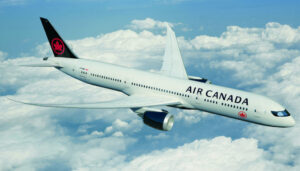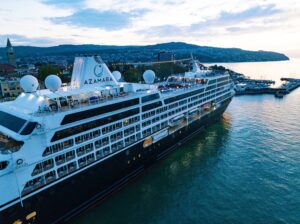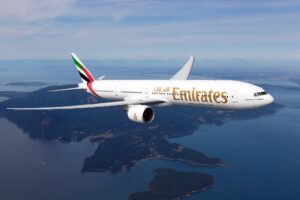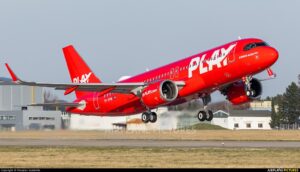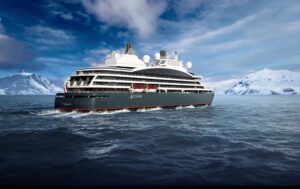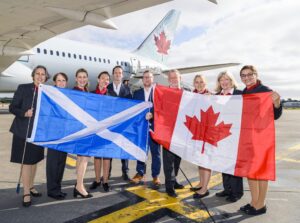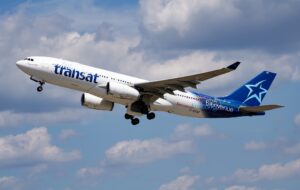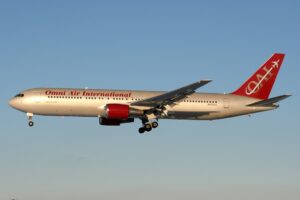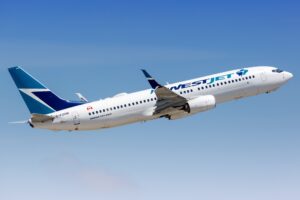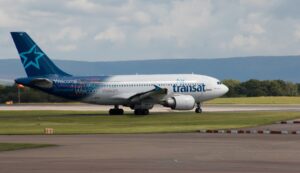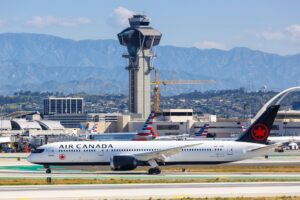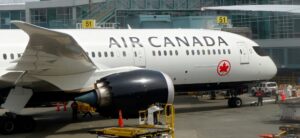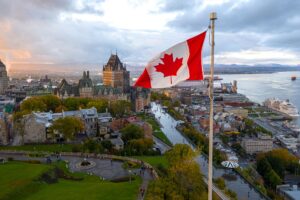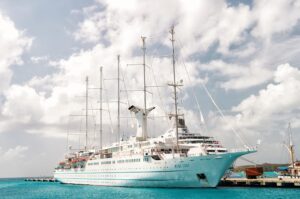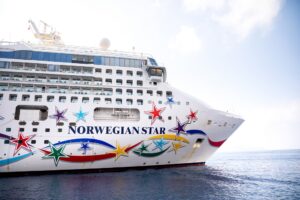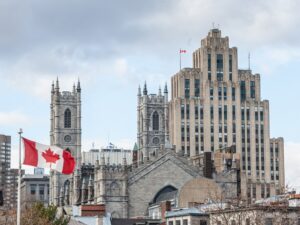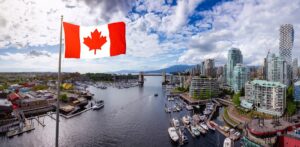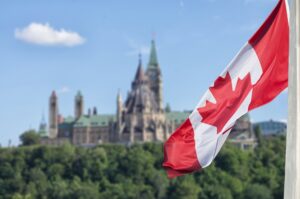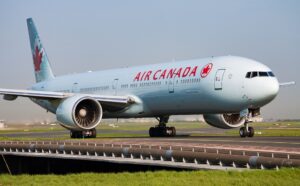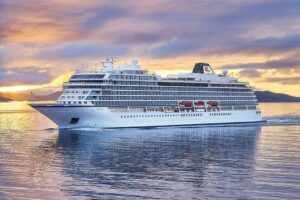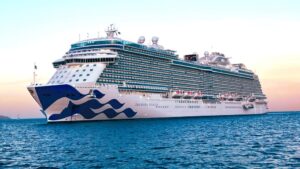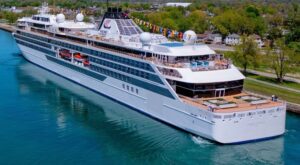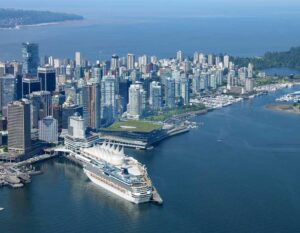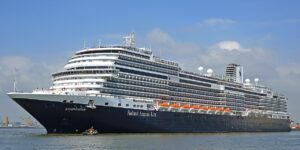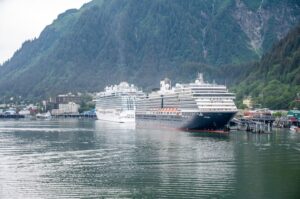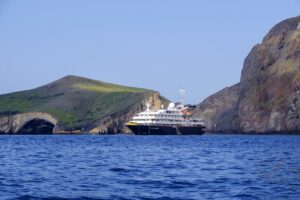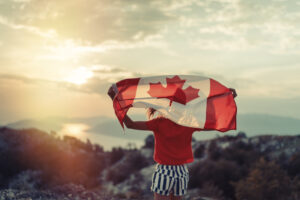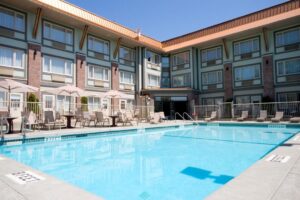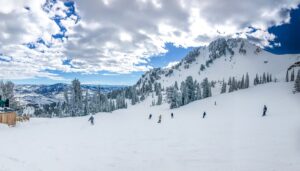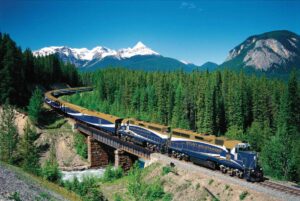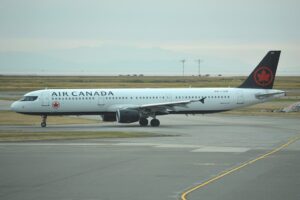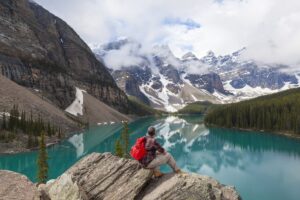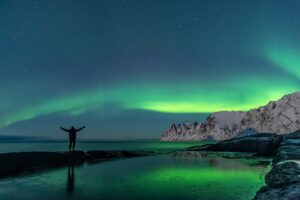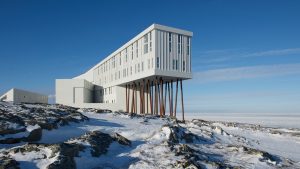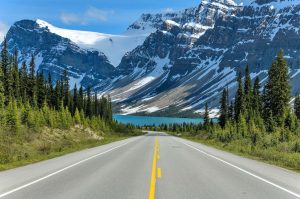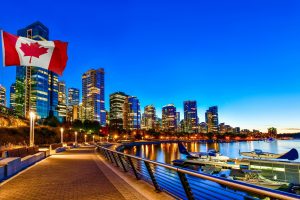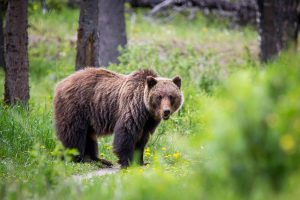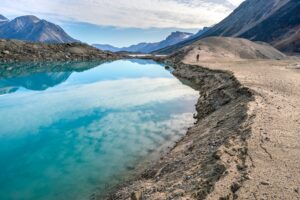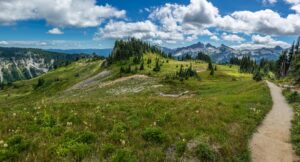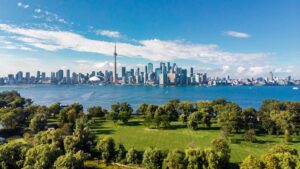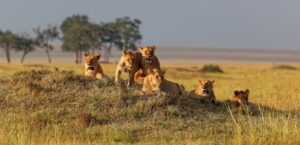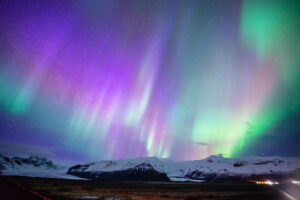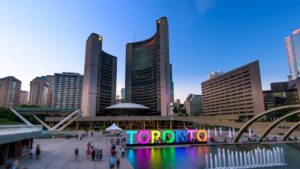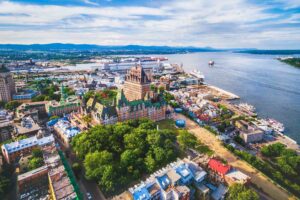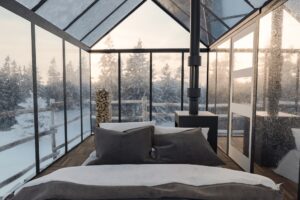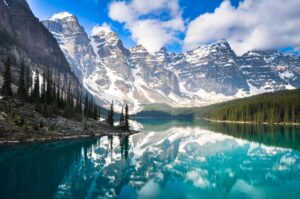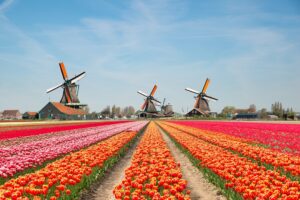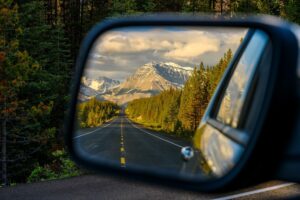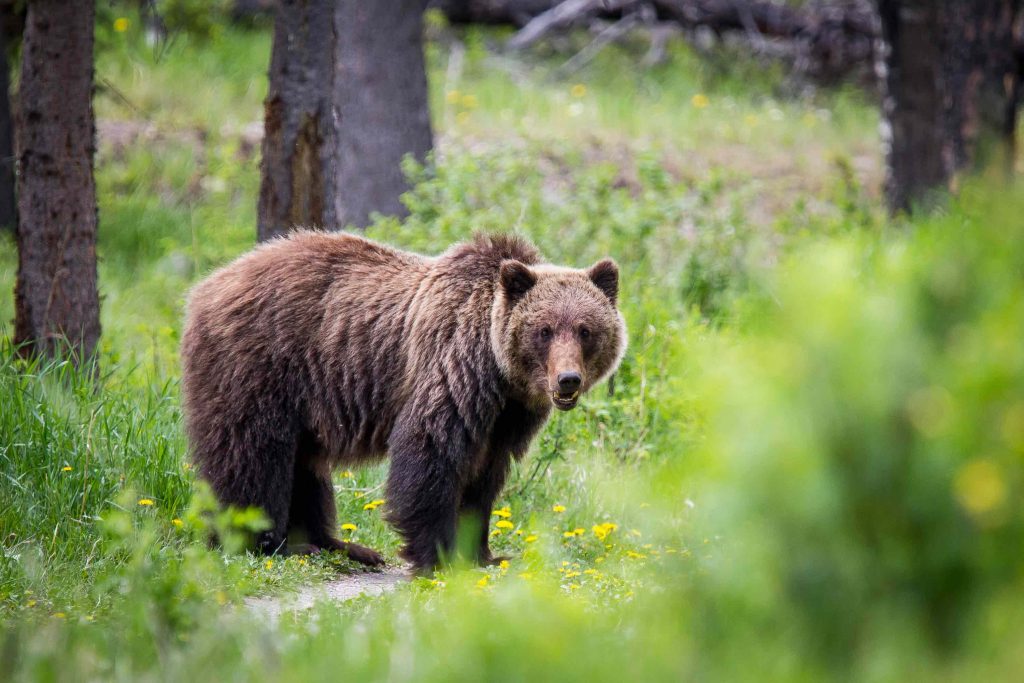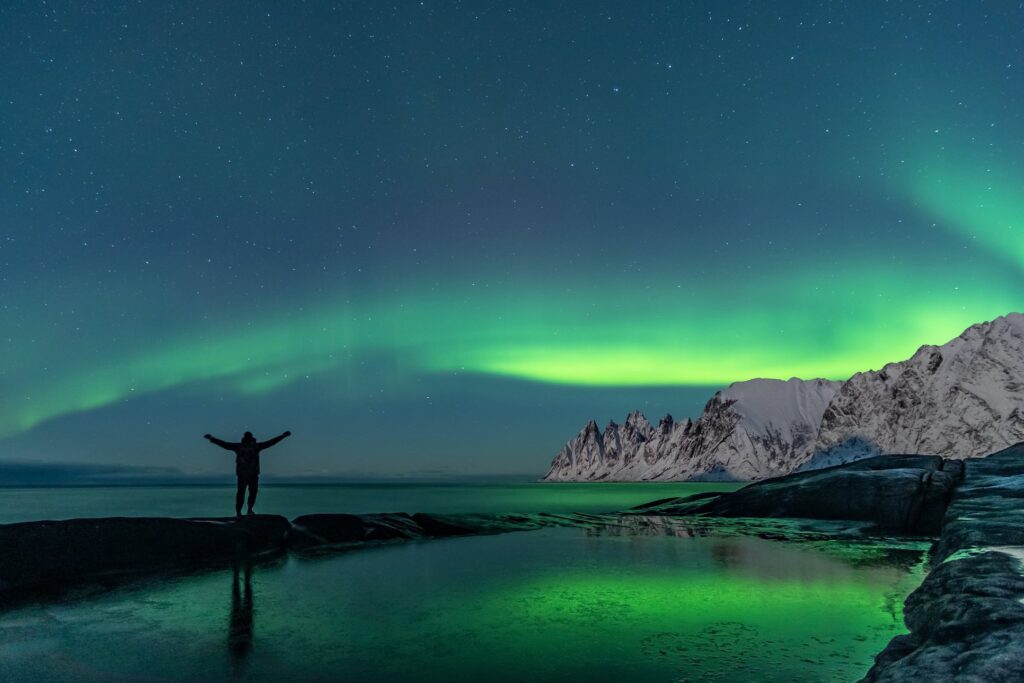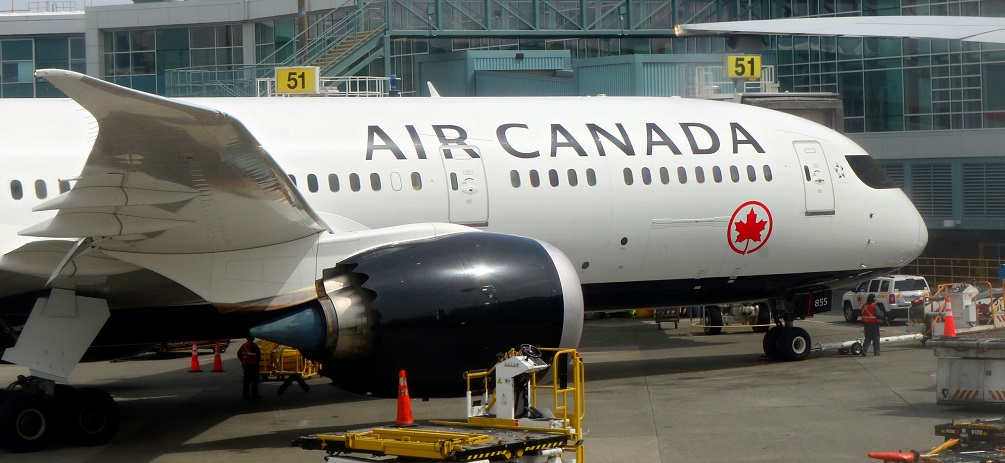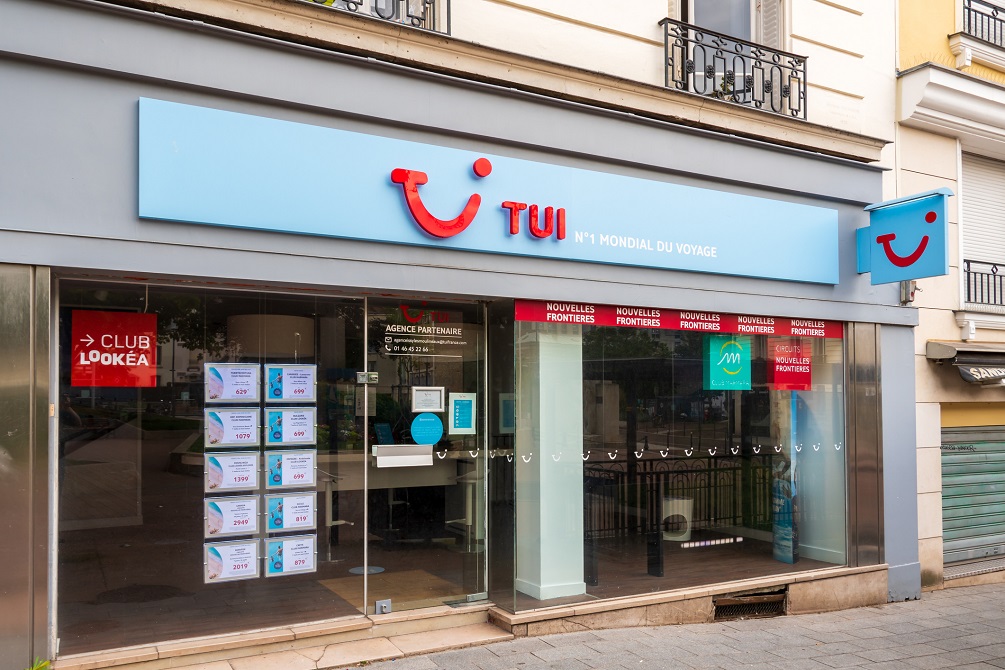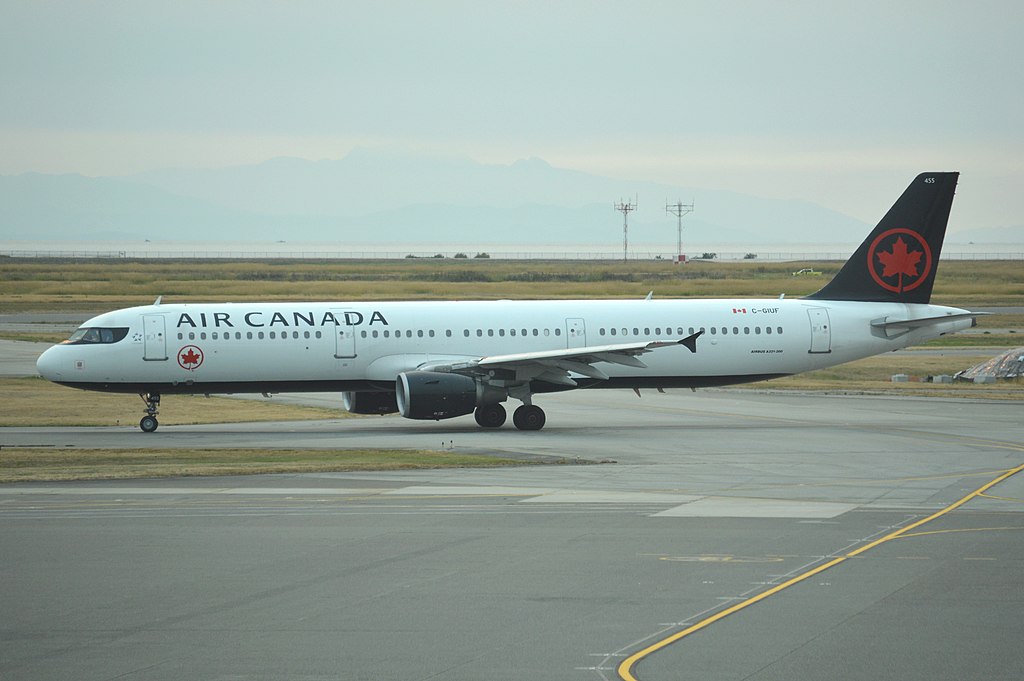Canada
Experience Canada’s abundant natural wonders, from the captivating northern lights to the dazzling Niagara Falls.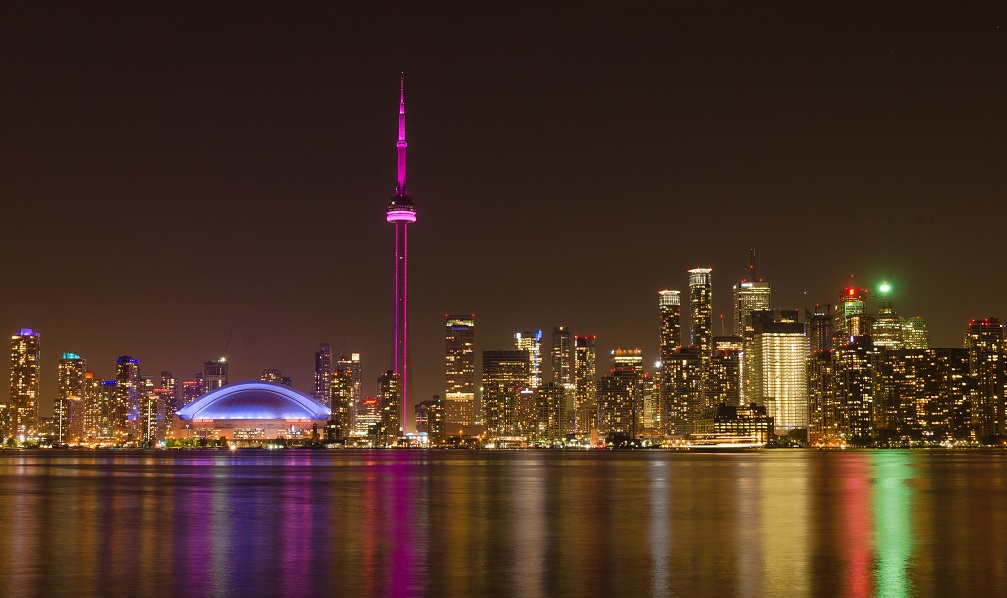
Canada, located in North America, is a welcoming country that offers a variety of experiences and thrills. It’s the world’s second largest country, trailing only Russia. Canada also has the world’s longest coastline and the greatest concentration of freshwater lakes.
Because of its size, Canada features a medley of physical environments, from rainforest and prairie to rugged mountain ranges. The country has a wide range of adventures to offer to both leisure seekers and outdoor enthusiasts.
Canada is a cultural mosaic, with several ethnic groups, languages, and cultures coexisting. The culture in the country is influenced by American and British heritage. Most of the legal and official societal affairs in the English-speaking portion of the country are similar to those in the United Kingdom.
Most Canadians are bilingual in English and French. In some provinces like Quebec, French is the dominant language.
If you’re wondering when to visit Canada, go in autumn. A trip during this season is not only ideal because of the pleasant weather but also because of the visually appealing scenery.
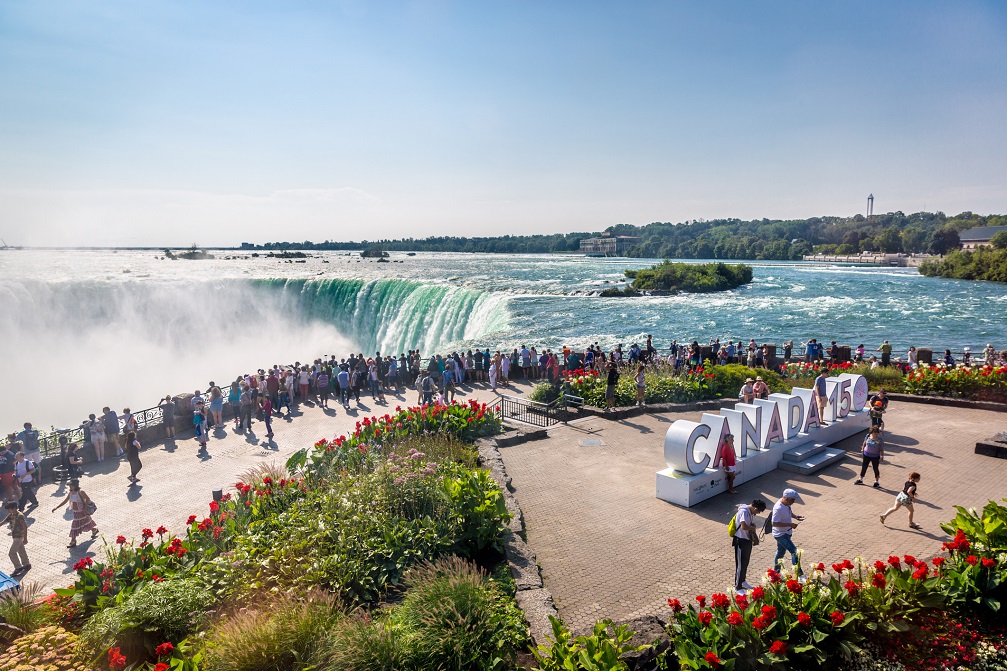




Canada is located right above the United States of America on the North American landmass. It not only shares a southern border with 12 U.S. states but also a western boundary with the U.S. state of Alaska.
The country stretches from the Atlantic Ocean in the east to the Pacific Ocean in the west, passing the Arctic Ocean to the north. Canada shares a maritime border with Greenland to the northeast and Frances’ archipelagic territory of Saint Pierre and Miquelon to the southeast.
Wide varieties of physical environments co-exist within Canada’s borders. Snow forests dominate the country, flat Canadian Prairies support agricultural activities, and ice is prevalent in the Rocky Mountains and northern Arctic groups. The Rockies contain five of Canada’s national parks.
The landscape features the mountains of northern Labrador and of Baffin Island in the northeast. Also, the Appalachian Mountains tower in the southeast and the Cordillera in the west.
Canada has the world’s largest population of freshwater lakes; of the country’s 2 million lakes, 563 contain freshwater. They’re known collectively as the Great Lakes, which Canada shares with the United States.
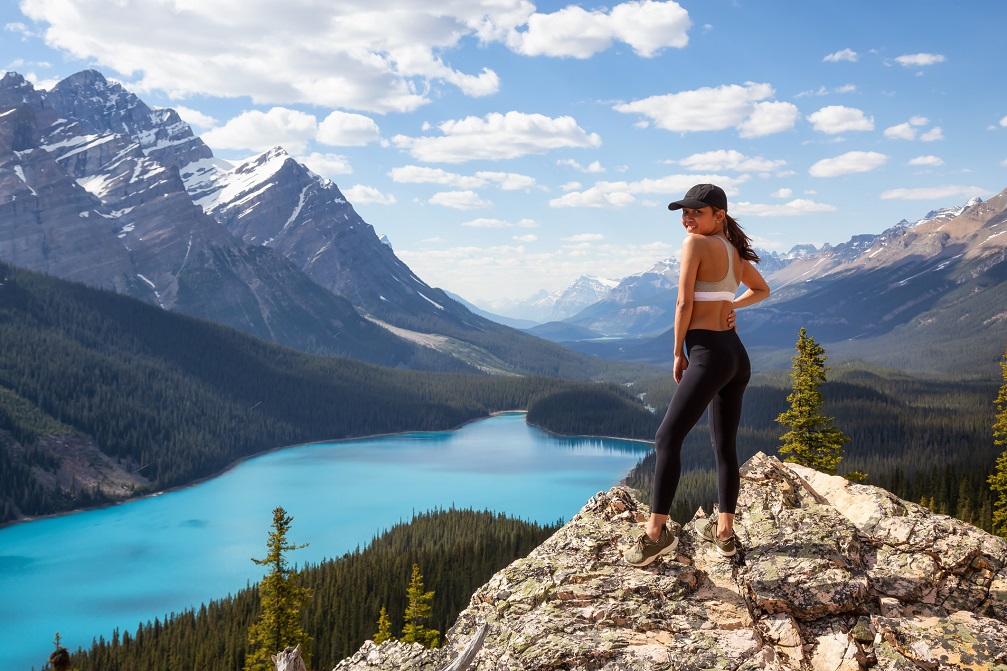


The vastness of Canada has resulted in a wide range of climates. The interior and Prairie provinces experience a continental climate, with freezing winters, hot summers, and sparse precipitation. A temperate climate prevails in the coastal regions of British Columbia.
In the country’s northern regions, the climate is like that of northern Scandinavia. Winters are very cold and short, while summers are cool. A climate marked by hot, humid summers and cold, snowy winters is present in Southern Ontario and Quebec.
The weather in Canada varies greatly by region and season. The parts farthest from the lakes and oceans are extremely cold during winter but warmer in summer.
Winter runs from December to March. Harsh winters are common in many parts of the country, except on the west coast. Daily average temperatures during winter are approximately −15 °C (5 °F), but can drop below −40 °C (−40 °F).
Snow falls in non-coastal parts of Canada, covering the ground for almost six months. Some areas in the north experience persistent snow year-round. This makes for thrilling outdoor activities. You can head over to Whistler Blackcomb near Vancouver for snowboarding.
Winter is the best season for skiing and skating anywhere in the country. You can also enjoy the Northern Lights or attend one of the winter festivals.
Summer is from June to August. The average maximum temperatures on the east and west coasts are in the low 20s °C (70s °F).
Vancouver has an average high temperature of 25 °C, while it’s 26 °C in Montreal and Toronto. Inland, the average maximum temperature during summer ranges between 25 and 30 °C (77 and 86 °F).
There are several festivals to attend across the country in summer. This includes the Toronto Caribbean Carnival, Just for Laughs in Montreal, and the Celebration of Light in Vancouver.
Although summer is the most popular time to visit Canada, the best months to visit are September through November. The weather is pleasant, and the orange, brown, and yellow leaves of the surrounding trees lend a stunning aesthetic to the cities.
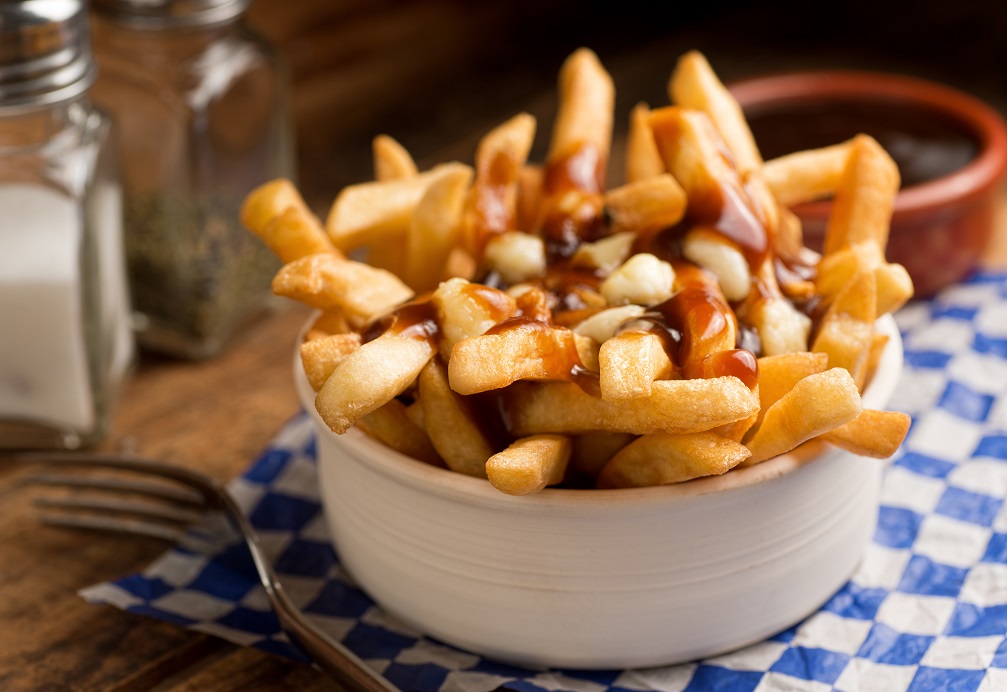




Canadian cuisine is varied in cooking style and ingredient use. There’s a strong indigenous, French, and British influence; the cuisine comprises foods such as meatloaf and Nanaimo bars.
Because of Canada’s vast physical environment, meat, fish and vegetables are common elements of the local diet. Salmon is the most consumed fish, which is baked, smoked, or eaten fresh.
Although Canadian cuisine borrows most ingredients from other cultures, it has a unique element: maple syrup. It’s used to sweeten desserts such as waffles, pancakes, and crepes.
You can sample several world-renowned cuisines in Canada. In French areas like Quebec, you can indulge in French cuisine.
Some popular dishes include tourtières and paté à la rapure (meat pies with beef, chicken, or clams) and poutine (french fries covered in gravy and topped with cheese).
Other typical meals in the country include boeuf fume (smoked meat), Calgary Beef, Trempettes (crispy, thick pancakes), and Fiddleheads (rolled fern leaves). Canadians also enjoy pizza, Chinese food, and tandoori.
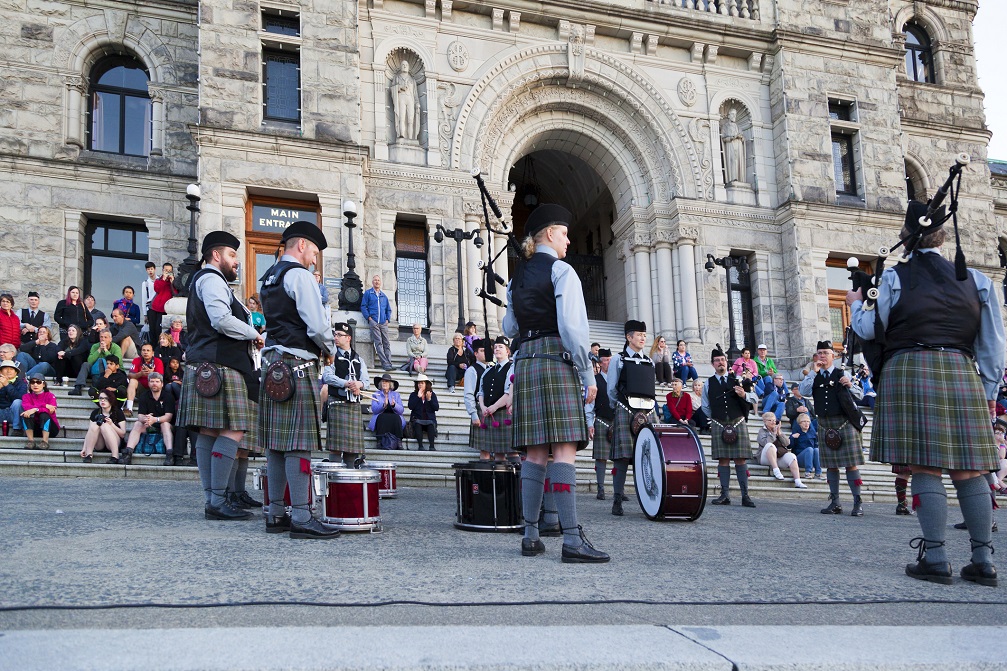


The clothes you pack for a trip to Canada will depend on where and when you’re going. Considering the varying climate across the country, check the weather forecast before you travel.
Casual clothing is common and dress codes in some regions are similar to those in the United States. However, Canadians dress more modestly than their southern neighbors do. The dress code in Toronto is closer to the British style.
It’s best to layer your clothing to account for changes in temperature when traveling through the country. This is especially important during winter. All year-round, you may also need a warm jacket, thermal underwear, gloves, and a knit cap.
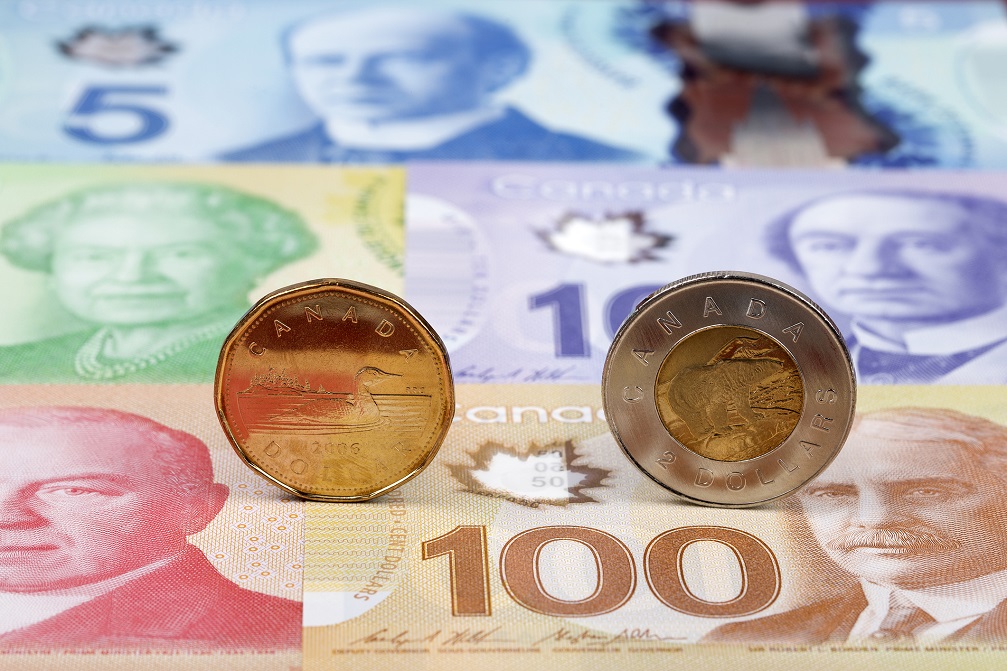




The currency used in Canada to pay for goods and services is the Canadian dollar (CAD). The banknotes in circulation come in denominations of $5, $10, $20, $50, $100.
Coins are available in denominations of $1, $2, 5c, and 10c. Locals refer to the $1 coin as a loonie because it features an image of a loon bird. The $2 coin is typically referred to as a toonie.
Canadian dollars can be purchased from any foreign exchange office, including your bank. There isn’t a limit on the Canadian dollars you can bring into the country. However, you must declare amounts above $10,000 at customs.
You can use your credit or debit card to make purchases. Canadian merchants accept visa or MasterCard.
ATMs are widely available across Canada. You can find them outside banks, in shopping centres, and at petrol stations. Ensure the ATM has a Visa or Visa PLUS logo on the front before withdrawing money.
Bear in mind, you may be charged with international withdrawal fees. Check with your bank about the fees they charge before you travel.
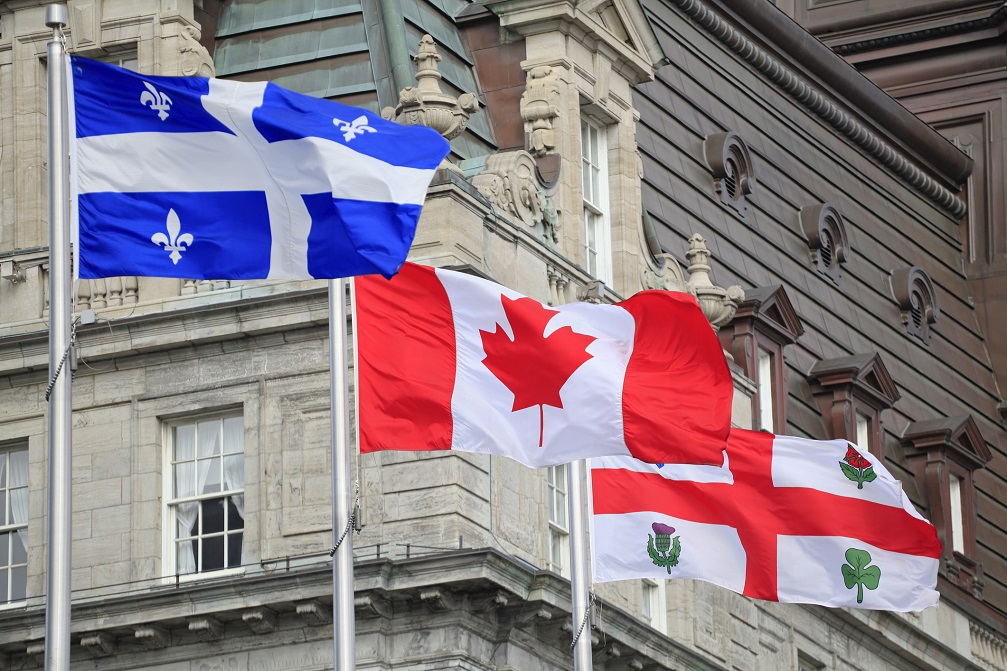


Canadians speak several languages, but their mother tongues are English and French. These are also the official languages of Canada.
English is spoken by about 56% of Canadians. Approximately 21% of the population regard French as their primary language.
French is the official provincial language in Quebec, while the province of New Brunswick is officially bilingual.
Other non-official languages spoken by a large number of the population include Spanish, Arabic, Italian, German, Tagalog, Punjabi, and Chinese. There are also 11 indigenous language groups.
Many sign languages are spoken in Canada, such as American Sign Language (ASL) and Quebec Sign Language (LSQ).
Since most Canadians speak English, navigating the cities is made simpler. However, if you plan to visit Montreal and Quebec, French-speaking locals will appreciate any attempt at speaking French. Here are some common French words and phrases you should know:
- Hello/Good day – Bonjour
- Good evening – Bonsoir
- How are you? – (Comment) ça va?
- I’m fine, thank you – Bien, merci
- Yes – Oui
- No – Non
- Excuse me – Pardon/excusez-moi
- Please – S’il vous plait
- How much is it? – C’est combien?
- Thank you – Merci
- You’re welcome – Je vous en prie
- Goodbye – Au revoir
- I’m sorry – Excusez-moi, s’il vous plait




















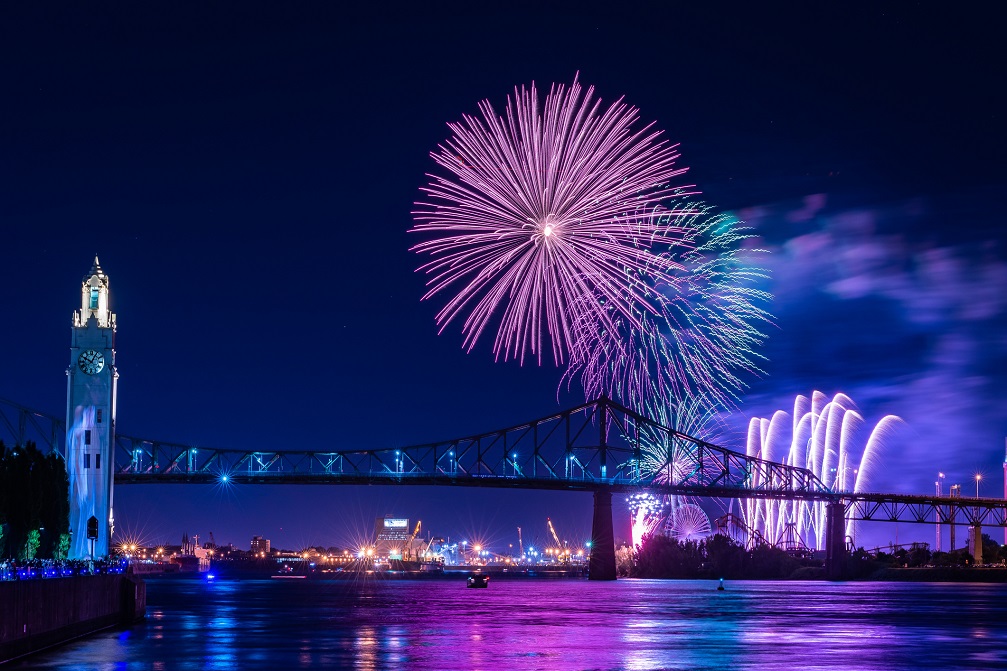


Canada is a melting pot of several ethnic groups and cultures. A large proportion of Canadians are of European, Southeast Asian, or Latin American descent. As a result, the country has adopted multiculturalism as an official national policy.
The mix of ethnic groups differs significantly from province to province. For example, Vancouver has a large Chinese population, while a small percentage of Quebec residents are French.
Because of Canada’s ethnic diversity, there is no single national culture. Canadians share some cultural similarities with the British, French, and Indigenous groups.
In the French-speaking parts of the country, the French influence is most noticeable in architecture, music, and cuisine. The influence of the British and Americans is felt strongly throughout the rest of Canada, especially in the English-speaking parts.
Canadian humour is an important part of Canadian culture. It’s ingrained in the country’s folklore, literature, music, art, and media. Several renowned comedians were born in Canada, including Jim Carrey and Catherine O’Hara.
Canada’s indigenous peoples recapture their traditions through First Nations art. This includes carving, basket making, and stone and bone sculpturing.
Canadian literature is world-renowned. Michael Ondaatje is a world-renowned Canadian author. He wrote The English Patient, which was adapted into a film of the same name. Margaret Atwood, the prolific novelist, poet, and literary critic, is also Canadian.
There is religious diversity in Canada, but most Canadians claim affiliation with the Roman Catholic Church or Protestantism. Hinduism, Islam, and Buddhism are minority religions of the country’s peoples.
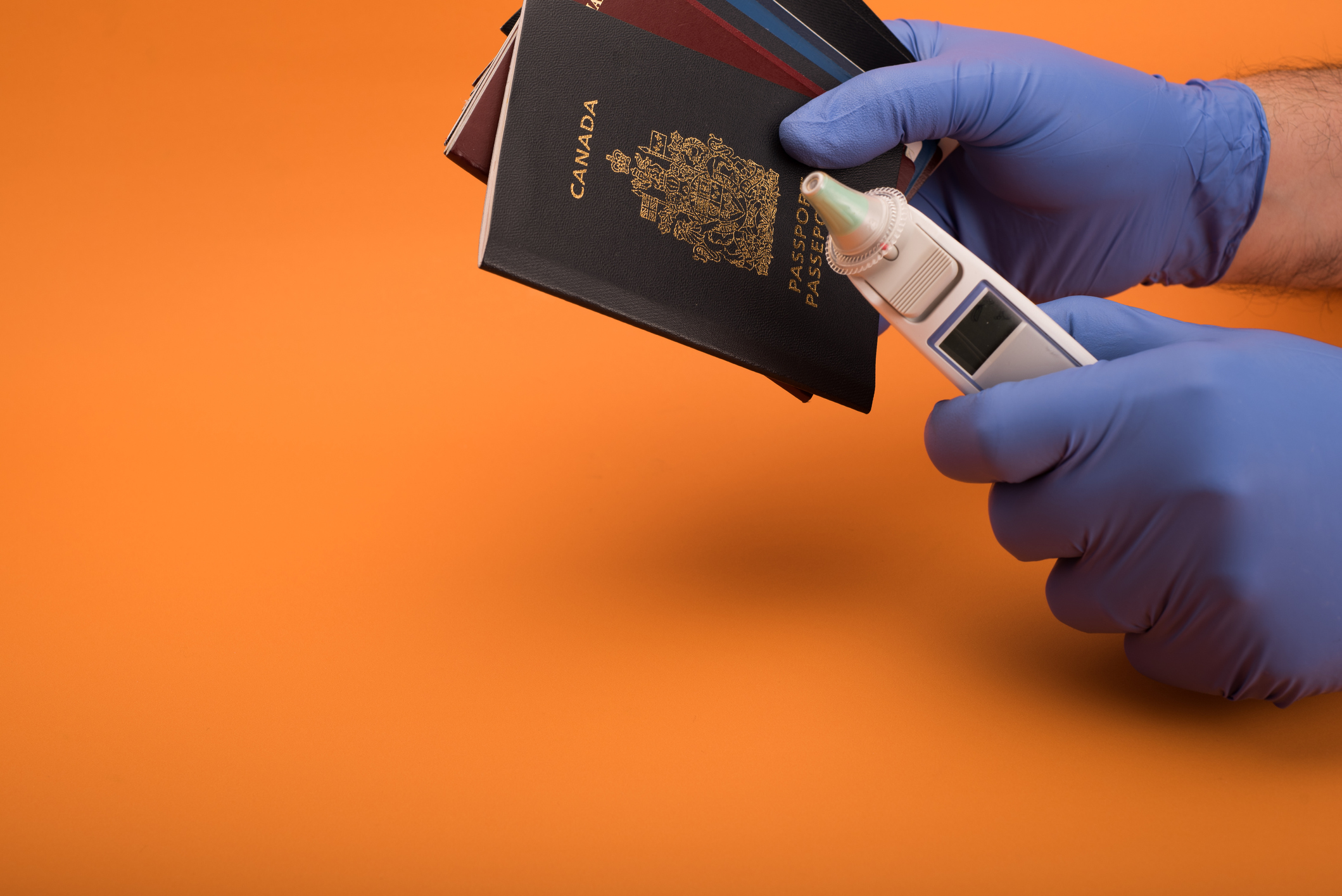


British passport holders rarely need a visa to enter Canada for short periods. However, you will need to get an Electronic Travel Authorisation (eTA).
This only applies if you’re travelling by air. If you’re visiting Canada by land or sea, you won’t need to get an eTA.
Those with British-Canadian dual nationality only need to present a valid Canadian passport before boarding their flight. You won’t need an eTA to enter the country.
Your passport must be valid for the duration of your stay in Canada. At Canadian border control, you will need to prove that you have sufficient funds for your stay in the country. This applies regardless if you’re staying with family or friends.
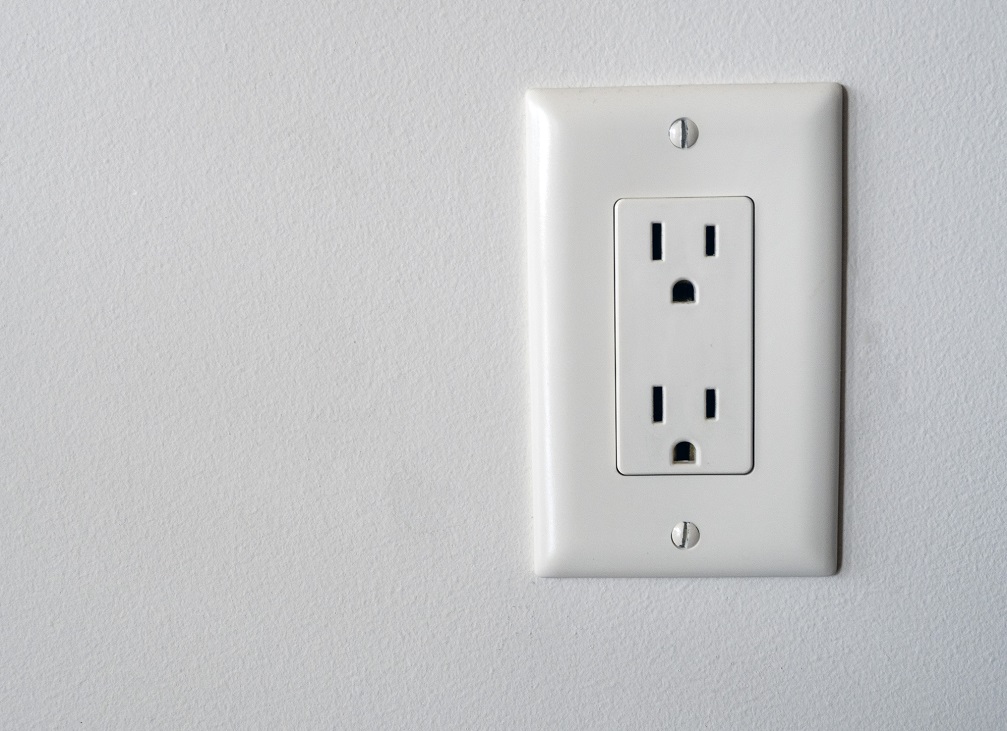


The power plugs and sockets used in Canada are type A (oval shaped with two flat prongs) and type B (circular with two flat and one round prongs).
The standard voltage in Canada is 120 V and the standard frequency is 60 Hz.
Since the standard voltage in the UK is 230 V, you will need a voltage converter in Canada. However, you can forgo buying a voltage convertor. Your appliances won’t be damaged, but they may not function properly.
You will also need a universal adaptor with surge protection for hot tools and hairdryers.





Canada, located in North America, is a welcoming country that offers a variety of experiences and thrills. It’s the world’s second largest country, trailing only Russia. Canada also has the world’s longest coastline and the greatest concentration of freshwater lakes.
Because of its size, Canada features a medley of physical environments, from rainforest and prairie to rugged mountain ranges. The country has a wide range of adventures to offer to both leisure seekers and outdoor enthusiasts.
Canada is a cultural mosaic, with several ethnic groups, languages, and cultures coexisting. The culture in the country is influenced by American and British heritage. Most of the legal and official societal affairs in the English-speaking portion of the country are similar to those in the United Kingdom.
Most Canadians are bilingual in English and French. In some provinces like Quebec, French is the dominant language.
If you’re wondering when to visit Canada, go in autumn. A trip during this season is not only ideal because of the pleasant weather but also because of the visually appealing scenery.





Canada is located right above the United States of America on the North American landmass. It not only shares a southern border with 12 U.S. states but also a western boundary with the U.S. state of Alaska.
The country stretches from the Atlantic Ocean in the east to the Pacific Ocean in the west, passing the Arctic Ocean to the north. Canada shares a maritime border with Greenland to the northeast and Frances’ archipelagic territory of Saint Pierre and Miquelon to the southeast.
Wide varieties of physical environments co-exist within Canada’s borders. Snow forests dominate the country, flat Canadian Prairies support agricultural activities, and ice is prevalent in the Rocky Mountains and northern Arctic groups. The Rockies contain five of Canada’s national parks.
The landscape features the mountains of northern Labrador and of Baffin Island in the northeast. Also, the Appalachian Mountains tower in the southeast and the Cordillera in the west.
Canada has the world’s largest population of freshwater lakes; of the country’s 2 million lakes, 563 contain freshwater. They’re known collectively as the Great Lakes, which Canada shares with the United States.



The vastness of Canada has resulted in a wide range of climates. The interior and Prairie provinces experience a continental climate, with freezing winters, hot summers, and sparse precipitation. A temperate climate prevails in the coastal regions of British Columbia.
In the country’s northern regions, the climate is like that of northern Scandinavia. Winters are very cold and short, while summers are cool. A climate marked by hot, humid summers and cold, snowy winters is present in Southern Ontario and Quebec.
The weather in Canada varies greatly by region and season. The parts farthest from the lakes and oceans are extremely cold during winter but warmer in summer.
Winter runs from December to March. Harsh winters are common in many parts of the country, except on the west coast. Daily average temperatures during winter are approximately −15 °C (5 °F), but can drop below −40 °C (−40 °F).
Snow falls in non-coastal parts of Canada, covering the ground for almost six months. Some areas in the north experience persistent snow year-round. This makes for thrilling outdoor activities. You can head over to Whistler Blackcomb near Vancouver for snowboarding.
Winter is the best season for skiing and skating anywhere in the country. You can also enjoy the Northern Lights or attend one of the winter festivals.
Summer is from June to August. The average maximum temperatures on the east and west coasts are in the low 20s °C (70s °F).
Vancouver has an average high temperature of 25 °C, while it’s 26 °C in Montreal and Toronto. Inland, the average maximum temperature during summer ranges between 25 and 30 °C (77 and 86 °F).
There are several festivals to attend across the country in summer. This includes the Toronto Caribbean Carnival, Just for Laughs in Montreal, and the Celebration of Light in Vancouver.
Although summer is the most popular time to visit Canada, the best months to visit are September through November. The weather is pleasant, and the orange, brown, and yellow leaves of the surrounding trees lend a stunning aesthetic to the cities.





Canadian cuisine is varied in cooking style and ingredient use. There’s a strong indigenous, French, and British influence; the cuisine comprises foods such as meatloaf and Nanaimo bars.
Because of Canada’s vast physical environment, meat, fish and vegetables are common elements of the local diet. Salmon is the most consumed fish, which is baked, smoked, or eaten fresh.
Although Canadian cuisine borrows most ingredients from other cultures, it has a unique element: maple syrup. It’s used to sweeten desserts such as waffles, pancakes, and crepes.
You can sample several world-renowned cuisines in Canada. In French areas like Quebec, you can indulge in French cuisine.
Some popular dishes include tourtières and paté à la rapure (meat pies with beef, chicken, or clams) and poutine (french fries covered in gravy and topped with cheese).
Other typical meals in the country include boeuf fume (smoked meat), Calgary Beef, Trempettes (crispy, thick pancakes), and Fiddleheads (rolled fern leaves). Canadians also enjoy pizza, Chinese food, and tandoori.



The clothes you pack for a trip to Canada will depend on where and when you’re going. Considering the varying climate across the country, check the weather forecast before you travel.
Casual clothing is common and dress codes in some regions are similar to those in the United States. However, Canadians dress more modestly than their southern neighbors do. The dress code in Toronto is closer to the British style.
It’s best to layer your clothing to account for changes in temperature when traveling through the country. This is especially important during winter. All year-round, you may also need a warm jacket, thermal underwear, gloves, and a knit cap.





The currency used in Canada to pay for goods and services is the Canadian dollar (CAD). The banknotes in circulation come in denominations of $5, $10, $20, $50, $100.
Coins are available in denominations of $1, $2, 5c, and 10c. Locals refer to the $1 coin as a loonie because it features an image of a loon bird. The $2 coin is typically referred to as a toonie.
Canadian dollars can be purchased from any foreign exchange office, including your bank. There isn’t a limit on the Canadian dollars you can bring into the country. However, you must declare amounts above $10,000 at customs.
You can use your credit or debit card to make purchases. Canadian merchants accept visa or MasterCard.
ATMs are widely available across Canada. You can find them outside banks, in shopping centres, and at petrol stations. Ensure the ATM has a Visa or Visa PLUS logo on the front before withdrawing money.
Bear in mind, you may be charged with international withdrawal fees. Check with your bank about the fees they charge before you travel.



Canadians speak several languages, but their mother tongues are English and French. These are also the official languages of Canada.
English is spoken by about 56% of Canadians. Approximately 21% of the population regard French as their primary language.
French is the official provincial language in Quebec, while the province of New Brunswick is officially bilingual.
Other non-official languages spoken by a large number of the population include Spanish, Arabic, Italian, German, Tagalog, Punjabi, and Chinese. There are also 11 indigenous language groups.
Many sign languages are spoken in Canada, such as American Sign Language (ASL) and Quebec Sign Language (LSQ).
Since most Canadians speak English, navigating the cities is made simpler. However, if you plan to visit Montreal and Quebec, French-speaking locals will appreciate any attempt at speaking French. Here are some common French words and phrases you should know:
- Hello/Good day – Bonjour
- Good evening – Bonsoir
- How are you? – (Comment) ça va?
- I’m fine, thank you – Bien, merci
- Yes – Oui
- No – Non
- Excuse me – Pardon/excusez-moi
- Please – S’il vous plait
- How much is it? – C’est combien?
- Thank you – Merci
- You’re welcome – Je vous en prie
- Goodbye – Au revoir
- I’m sorry – Excusez-moi, s’il vous plait























Canada is a melting pot of several ethnic groups and cultures. A large proportion of Canadians are of European, Southeast Asian, or Latin American descent. As a result, the country has adopted multiculturalism as an official national policy.
The mix of ethnic groups differs significantly from province to province. For example, Vancouver has a large Chinese population, while a small percentage of Quebec residents are French.
Because of Canada’s ethnic diversity, there is no single national culture. Canadians share some cultural similarities with the British, French, and Indigenous groups.
In the French-speaking parts of the country, the French influence is most noticeable in architecture, music, and cuisine. The influence of the British and Americans is felt strongly throughout the rest of Canada, especially in the English-speaking parts.
Canadian humour is an important part of Canadian culture. It’s ingrained in the country’s folklore, literature, music, art, and media. Several renowned comedians were born in Canada, including Jim Carrey and Catherine O’Hara.
Canada’s indigenous peoples recapture their traditions through First Nations art. This includes carving, basket making, and stone and bone sculpturing.
Canadian literature is world-renowned. Michael Ondaatje is a world-renowned Canadian author. He wrote The English Patient, which was adapted into a film of the same name. Margaret Atwood, the prolific novelist, poet, and literary critic, is also Canadian.
There is religious diversity in Canada, but most Canadians claim affiliation with the Roman Catholic Church or Protestantism. Hinduism, Islam, and Buddhism are minority religions of the country’s peoples.



British passport holders rarely need a visa to enter Canada for short periods. However, you will need to get an Electronic Travel Authorisation (eTA).
This only applies if you’re travelling by air. If you’re visiting Canada by land or sea, you won’t need to get an eTA.
Those with British-Canadian dual nationality only need to present a valid Canadian passport before boarding their flight. You won’t need an eTA to enter the country.
Your passport must be valid for the duration of your stay in Canada. At Canadian border control, you will need to prove that you have sufficient funds for your stay in the country. This applies regardless if you’re staying with family or friends.



The power plugs and sockets used in Canada are type A (oval shaped with two flat prongs) and type B (circular with two flat and one round prongs).
The standard voltage in Canada is 120 V and the standard frequency is 60 Hz.
Since the standard voltage in the UK is 230 V, you will need a voltage converter in Canada. However, you can forgo buying a voltage convertor. Your appliances won’t be damaged, but they may not function properly.
You will also need a universal adaptor with surge protection for hot tools and hairdryers.
Travel related news, information and inspirational articles and videos for travellers booking flights or holidays to Canada. Ask questions about travel in Canada and get answers from Canada experts
NEWS
1st July 2023
27th April 2023
30th May 2022
22nd February 2022
17th January 2022
27th September 2022
20th August 2022
16th February 2022
15th September 2021
12th July 2021
22nd May 2023
8th February 2023
18th January 2023
2nd July 2022
17th January 2022
27th September 2022
16th February 2022
27th September 2022
20th August 2022
16th February 2022
1st July 2023
11th March 2023
20th February 2023
15th September 2022
2nd December 2021
15th September 2022
1st July 2023
Inspiration, Information and Travel Guides
14th April 2023
3min. read
10th July 2022
11min. read
24th June 2022
6min. read
30th May 2022
5min. read
18th May 2022
7min. read
12th May 2022
5min. read
22nd November 2021
7min. read
13th November 2021
11min. read
14th April 2023
3min. read
13th November 2021
11min. read
1st October 2021
8min. read
19th July 2021
8min. read
16th May 2021
7min. read
14th January 2021
2min. read
1st February 2020
3min. read
24th June 2022
6min. read
8th November 2021
7min. read
1st October 2021
8min. read
24th February 2021
7min. read
1st October 2021
8min. read
24th February 2021
7min. read
1st October 2021
8min. read
14th April 2023
3min. read
10th July 2022
11min. read
22nd November 2021
7min. read
13th November 2021
11min. read
1st October 2021
8min. read
28th September 2021
10min. read
11th September 2021
4min. read
20th August 2021
10min. read
14th April 2023
3min. read
22nd November 2021
7min. read
13th November 2021
11min. read
8th November 2021
7min. read
1st October 2021
8min. read
28th September 2021
10min. read
11th September 2021
4min. read
20th August 2021
10min. read
1st October 2021
8min. read
28th September 2021
10min. read
20th August 2021
10min. read
13th November 2021
11min. read
1st October 2021
8min. read
24th February 2021
7min. read
1st October 2021
8min. read
24th February 2021
7min. read
8th November 2021
7min. read
10th July 2022
11min. read
24th June 2022
6min. read
30th May 2022
5min. read
22nd November 2021
7min. read
8th November 2021
7min. read
1st October 2021
8min. read
9th September 2021
7min. read
24th February 2021
7min. read
18th May 2022
7min. read
24th February 2021
7min. read
28th September 2021
10min. read
14th January 2021
2min. read
22nd November 2021
7min. read
1st October 2021
8min. read
9th September 2021
7min. read
19th July 2021
8min. read
24th June 2022
6min. read
30th May 2022
5min. read
18th May 2022
7min. read
22nd November 2021
7min. read
1st February 2020
3min. read
9th September 2021
7min. read
1st October 2021
8min. read
MEET THE Canada EXPERTS
If you are looking to book a holiday to Canada or needs some help and advice planning travel to Canada then contact one of the UK based independent travel agents that specialise in Canada itineraries.


Ian Robinson
Westhoughton, Bolton, Greater Manchester
Exclusive Travel Holidays
0161 327 1707
ian@exclusivetravel.holiday
Specialist Area:
Cruise, Weddings and Honeymoon, All Inclusive, City Breaks, Cycling, Diving and Snorkeling, Hiking, Safari
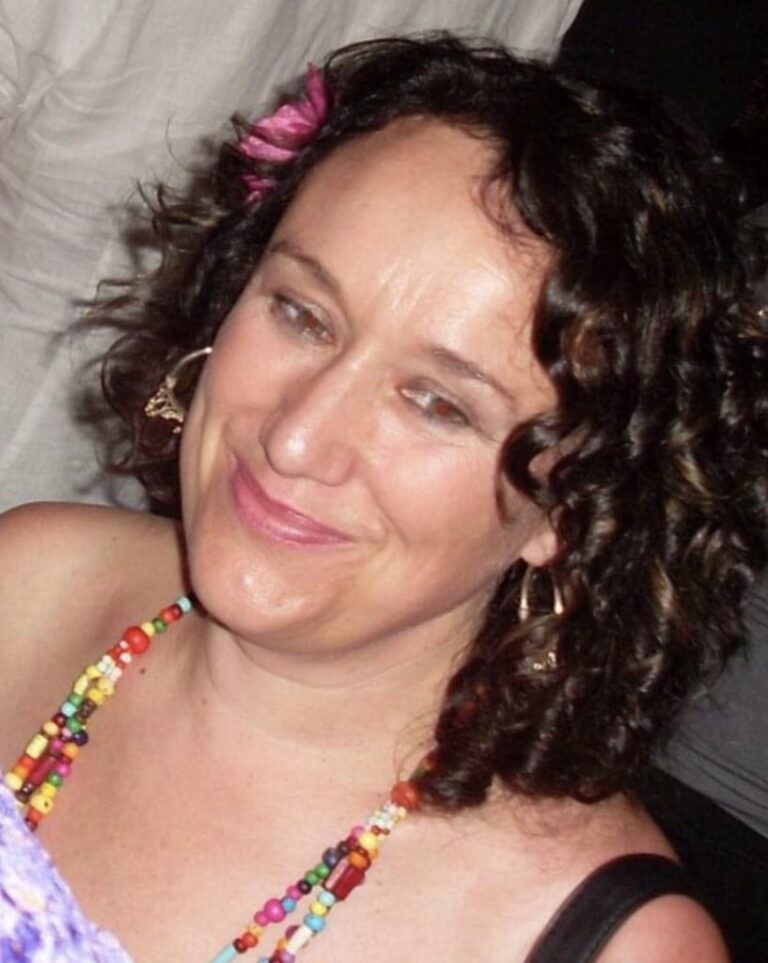

Sally Jo Anne Murphy
Pontefract, West Yorkshire
All My Holidays
07967640919
sally@allmyholidays.com
Specialist Area:
Spa & Wellness, Weddings and Honeymoon, Touring, Self Drive, Safari, Romantic, Luxury
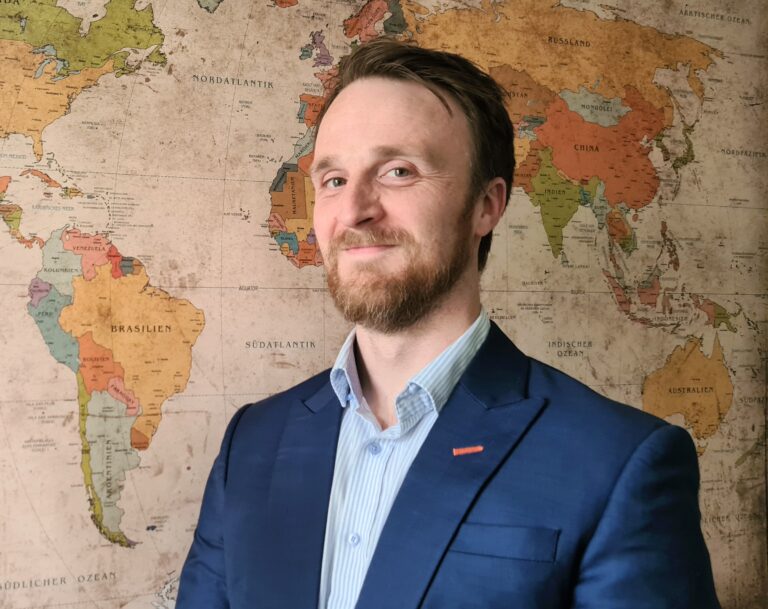

Chris Pratt
St Albans, Hertfordshire
Not Just Travel
07878803324
chris.pratt@notjusttravel.com
Specialist Area:
City Breaks, Beaches, Action & Adventure, All Inclusive, Cruise, Yachts & Sailing, Family, Weddings and Honeymoon, Ski, Solo Travel, Luxury
FEATURED VIDEOS
No Featured Videos Found.
Your Travel Questions Answered
Ask any travel related question and get an answer from one of our experts that will provide you with an answer from their personal experience
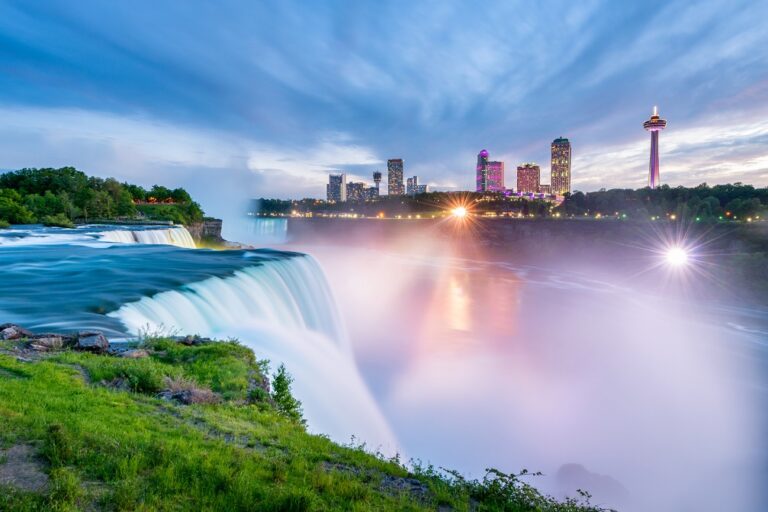

I am planning to go on a trail journey with my friends on the upcoming weekend. I am looking for the best options for hiking trails in Ontario.
EVENTS IN THE Canada
Modal title
SIGN UP FOR OUR MAILING LIST
Enter your email address and receive daily or weekly updates with the latest articles, news and videos.Copyright © 2021 Experienced Travellers Ltd. Experienced Travellers Ltd is not responsible for the content of external sites. Read about our approach external linking.

